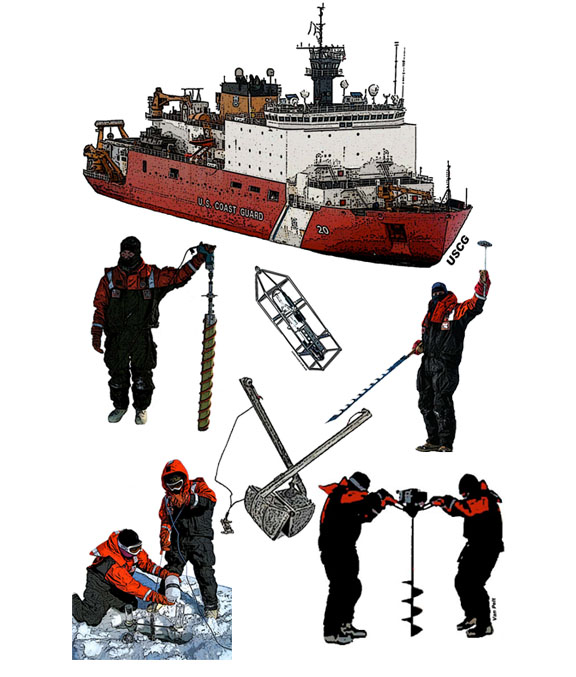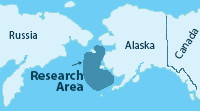|
Many factors needed to be considered as Dr. Gradinger and his team planned their research. In addition to having the necessary sampling equipment, it was important that they time the research trips so they would be collecting samples during the spring sea ice melt season. If they traveled too early, their measurements might underestimate the importance of ice algae. If they traveled too late, the ice would all have melted and there would be no ice algae for them to measure.
The team chose research sites in the eastern Bering Sea because it is a very productive region of water. Picking the research area was only the beginning. Next, they had to select the right tools to help them answer their research questions.
Navigate through the images below to learn how each tool helped the team answer their research questions:

With many samples to collect at every study site, a researcher's job is never dull. Can you imagine what daily life would be like on a 400-foot long ship floating in the middle of the Bering Sea?
|
|
WHO IS STUDYING SEA ICE?


|
|
MELT SEASON (n)- the time of the year when melting occurs |
|
|
PRODUCTIVE (adj)- being rich in resources; in this case, with valuable resources like fish |
|
|
PROPEL (v)- to push or move in a particular direction |
|
|
WATER COLUMN (n)- the area of water between the surface and the sea floor |
|
|
ALGAL GROWTH (n)- the process of algae growing |
|
|
ROV (n)- a remotely-operated vehicle |
|